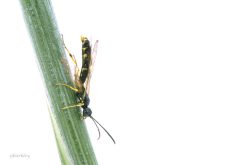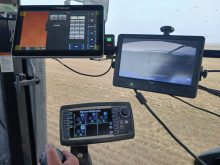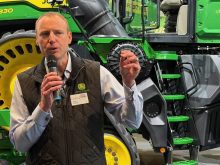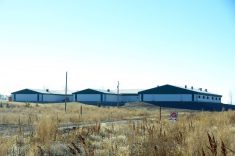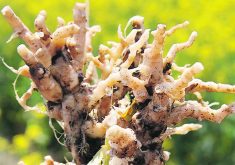In this world, most dreams require money. The Rural Alberta Development Fund (RADF) helps people living in rural communities find their dreams.
Laura Nelson, executive director of Raymond-based Rural Safety Smarts, is one of the grateful recipients. The money her group received from the RADF allowed them to increase their safety instructors from three to seven. Thanks to the fund, 50,000 Alberta students from kindergarten to Grade Six learned how to be safe on the farm through interactive school presentations held across the province.
“We are now able to garner more sector support because we have more active instructors,” said Nelson. “The support of the Rural Alberta Development Fund has been so useful because we’re really been able to grow our program into something that no other province has, a program that reaches so many school children on an annual basis.”
Read Also

Wheat stem sawfly decreased across the province
Wheat stem fly damage in Alberta was down in 2025, and the outlook for 2026 looks similar.
A healthy rural Alberta benefits the economy of the whole province, said Murray Davison, director of programming and partnership with the RADF. “We need to get all the services and same opportunities out in rural Alberta that the urban centres have,” he said.
The RADF is a $100 million fund capitalized in 2007 under the Alberta government’s Rural Development Strategy. So far, $79.6 million has been allocated to 73 projects.
Groups seeking funds must submit an Expression of Interest to staff, who help them develop their proposal before it is submitted to the board. “We start working with them right away so they have a good quality proposal to go to the board for decision,” said Davison.
Several program areas
Projects that apply for funding must fall into several program areas; capacity building, rural development, economic development, rural health, training and learning development. Vulnerable groups, such as seniors, youth or First Nations are a priority. Only non-profit organizations can apply and there is no deadline for applications.
“Many of the projects have social outreach and community building components,” said Davison. “It seems that these are missing and that rural Alberta is really asking for those.”
Examples of successful projects include a mobile trades project out of Lac La Biche, and a hockey school in Warner. Another example is the Café Connections program in Camrose, targeted to youth at risk. “These kids are involved in running that business and they learn every aspect of it, whether it be waiting tables, or the finances, or the cooking, the whole nine yards. They run the business, which generates funds and in doing so, they get counseling and training and they’re not at risk any more when they leave. They’re going back to school or getting jobs,” said Davison.
The RADF is a dream that will expire, as funds will be dispersed by March 2012. Staff will remain to administer programs until March 2014. Anyone who is interested in seeking funds can visit the website www.radf.ca and submit an Expression of Interest.
———
“WeneedtogetalltheservicesandsameopportunitiesoutinruralAlbertathattheurbancentreshave.”
Murray Davison
RADF



